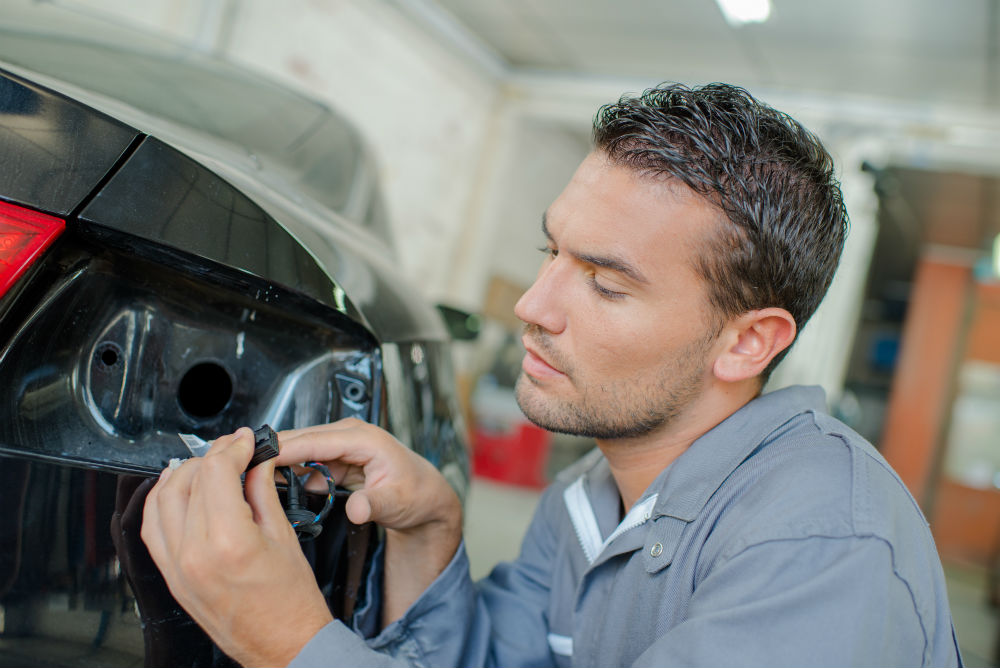
If you own a vehicle, the most important thing you have to consider is safety. There are a lot of dangers associated with owning a vehicle, and the only way to truly put yourself out of harm’s way is to maintain the upkeep of your vehicle.
This includes going for maintenance and repairs every time there is a problem, keeping up with oil checks and changes, and driving with care without being reckless.
No matter what, you will be using your vehicle at night, and many people drive every day and even at night.
In order to be safe when lighting is at a minimal, you need the proper headlights in place. They need to be strong to increase your field of visibility so you can protect yourself from obstacles that may be in your way.
Headlights sometimes go out, and sometimes it is due to the entire socket not working.
There are times when it may be just the bulb that goes out, but usually the problem is a lot more complicated than that.
We are going to walk you through how to replace a headlight socket, and how to know if it’s the problem or not.
How To
While some newer models between 2015-2018 may be slightly different, older models should follow this same outline for replacing a headlight socket.
These sockets connect to the electrical system of the car, and even though every socket will vary depending on the make and model, this is the average one. Follow along our steps to determine if it is actually the socket that needs to be replaced.

The Bulb
If your headlight stops working, the first obvious suspect is going to be your bulb. Almost 90% of the time it is a problem with the bulb and it can be easily fixed.
Bulbs are right under the hood and you simply need to turn the retaining ring and pull the bulb socket out. There are some bulbs that are under the lens in the car which require a specific screwdriver to take it out.
Once the bulb is out, replace it with a new one without touching the glass of the bulb with your hands. These bulbs are very delicate and the oils on your skin can actually cause bulb failure. If the headlights now work you know it was just the bulb, if not you need to solve the socket problem.
The Socket
So why would a socket sometimes stop working? The most usual answer is corrosion. The older your car is, the more likely it is to have corrosion and rust on the inside that lead to the death of your headlight socket. Now if both your headlights and taillights are out, it is usually a fuse problem within a car.
Replacing the Socket
The first thing to do before replacing an entire socket is to clean your socket and try to make it work to save you money. You can clean your socket with an electrical contact cleaner that you can buy from a multitude of stores. Corrosion can easily be scraped off with a brush or a screwdriver, but it must be done delicately and gently.
You want to do tests on the socket before buying a whole new socket as it will save you money. You can easily test the power of the socket.
Turn on the switch, ground your tester and probe the contacts to see if the light goes on. The tester should light up for two out of the three contacts.
The socket could also have gone bad due to poor wire insulation. If this is the case, rather than go to a mechanic, simply replace the socket yourself. This can be done by purchasing one at your local automotive store.
Ensure the car is off, and remove the socket and all its wires from the car. To put a new headlight socket in, simply replace the wires in the correct order and test it immediately with a new bulb in place to see if it is working correctly.
Conclusion
To help you through your first time replacing a headlight socket, we recommend watching a YouTube tutorial so you can visually see what other people do.
If the problem persists, or if you do not feel comfortable doing it yourself, it is an easy job for a mechanic to do although it will cost you more rather than a DIY project.